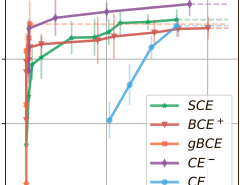Authors: Paulo Tabuada, Bahman Gharesifard
Published on: July 12, 2020
Impact Score: 8.22
Arxiv code: Arxiv:2007.06007
Summary
- What is new: Establishes a sufficient condition for deep residual neural networks’ universal approximation through a novel connection with geometric nonlinear control.
- Why this is important: Understanding the theoretical foundation of deep residual networks’ ability to approximate any continuous function.
- What the research proposes: Providing a general condition involving the activation function’s relationship with a quadratic differential equation to guarantee universal approximation capabilities.
- Results: Demonstrated that networks with as few as n+1 neurons per layer can approximate continuous functions across a compact set extremely well, even with very simple architectures.
Technical Details
Technological frameworks used: Geometric nonlinear control framework
Models used: Deep residual neural networks
Data used: Theoretical models based on activation functions and differential equations
Potential Impact
This research could impact AI development companies, specifically those focusing on neural networks, and industries such as autonomous driving, robotics, and any sector relying on sophisticated prediction models.
Want to implement this idea in a business?
We have generated a startup concept here: DeepGeoNet.



Leave a Reply